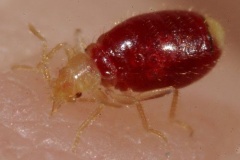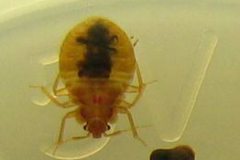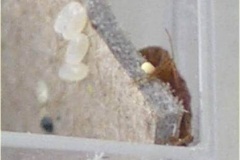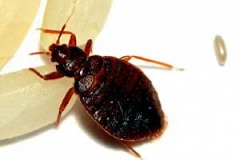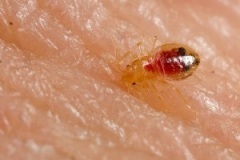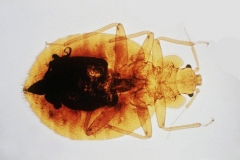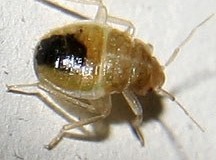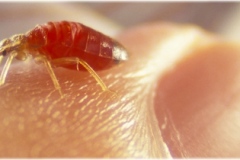Categories
- Bed Bug
- Bed Bug Cream
- BED BUG DATABASE
- Bed Bug Home Remedies
- Bed Bug Oil
- Bed Bug Remedies
- Bed Bug Spray
- Bed Bugs New York
- Bed Bugs Vancouver
- Bed Bugs World
- Bed Bugs American Samoa
- Bed Bugs Canada
- Bed Bugs Guam
- Bed Bugs North Mariana islands
- Bed Bugs Puerto Rico
- Bed Bugs United States
- Bed Bugs Alabama
- Bed Bugs Alaska
- Bed Bugs Arizona
- Bed Bugs Arkansas
- Bed Bugs California
- Bed Bugs Colorado
- Bed Bugs Connecticut
- Bed Bugs Delaware
- Bed Bugs Florida
- Bed Bugs Georgia
- Bed Bugs Hawaii
- Bed Bugs Idaho
- Bed Bugs Illinois
- Bed Bugs Indiana
- Bed Bugs Iowa
- Bed Bugs Kansas
- Bed Bugs Kentucky
- Bed Bugs Louisiana
- Bed Bugs Maine
- Bed Bugs Maryland
- Bed Bugs Massachusetts
- Bed Bugs Michigan
- Bed Bugs Minnesota
- Bed Bugs Mississippi
- Bed Bugs Missouri
- Bed Bugs Montana
- Bed Bugs Nebraska
- Bed Bugs Nevada
- Bed Bugs New Hampshire
- Bed Bugs New Jersey
- Bed Bugs New Mexico
- Bed Bugs New York
- Bed Bugs North Carolina
- Bed Bugs North Dakota
- Bed Bugs Ohio
- Bed Bugs Oklahoma
- Bed Bugs Oregon
- Bed Bugs Pennsylvania
- Bed Bugs Rhode Island
- Bed Bugs South Carolina
- Bed Bugs South Dakota
- Bed Bugs Tennessee
- Bed Bugs Texas
- Bed Bugs Utah
- Bed Bugs Vermont
- Bed Bugs Virgin Islands
- Bed Bugs Virginia
- Bed Bugs Washington
- Bed Bugs Washington DC
- Bed Bugs West Virginia
- Bed Bugs Wisconsin
- Bed Bugs Wyoming
- BedBug Removal
- BedBugs in Michigan
- Canada Bed Bugs
- Do it yourself Bed Bug
- Exterminator Bed Bugs
- Health
- Pest Inspection
- Toronto Bed Bugs
- Welcome to Bed Bugs
Registry Sites List
- Bronx Bed Bug Registry Infestation Maps, Residential And Hotel
- Brooklyn Bed Bug Registry Infestation Maps, Residential And Hotel
- Manhattan Bed Bug Registry Infestation Maps, Residential And Hotel
- Nyc Bed Bug Registry Infestation Maps, Residential And Hotel
- Queens Bed Bug Registry Infestation Maps, Residential And Hotel
- Staten Island Bed Bug Registry Infestation Maps, Residential And Hotel
Recommended Sites
Monthly Archives: July 2014
News Links:
A bed bug Catch-22
Harold Shirley never had seen a bed bug before moving to the Milshire Hotel three years ago. Now his arms are covered in bites, and he has to take sleeping pills at night because the bugs wake him up. The building is thoroughly infested, and he said he doesn't have the money to move.
"When I wake up, they're in my ears and my nose," he stated in a letter to management of the Milshire, 2525 N. Milwaukee Ave., a single-room occupancy building in Logan Square.
Shirley and a handful of other Milshire tenants went to court Tuesday morning trying to make an unusual argument against their eviction: The bed bug infestation at the building is so bad that making residents leave would be a public hazard.
"The lawyers' and tenants' complaint is, in part, that to ask the tenants to move out is a violation of the bed bug ordinance because they will be asked to take this issue that hasn't been addressed and spread it across the city to wherever they move to," said Terry Enright, an activist with the Logan Square Neighborhood Association who has been working with Milshire residents.
It's one of the latest tussles in months of discussion over single-room occupancy buildings such as the Milshire. SROs generally rent small bedrooms with shared kitchens and bathrooms. Not all are in bad condition, like the Milshire, but their tenants are generally very low-incomeAld. Walter Burnett Jr. (27th) said they are sometimes "one step from being homeless."
SROs have grown scarce in Chicago as developers buy the buildings, evict the tenants and rent remodeled units at market rates. Chicago has lost 30 SRO buildings to redevelopment since the beginning of 2009, according to the city. Now, there are 73 licensed SROs left.
An ordinance backed by Mayor Emanuel to halt SRO conversions citywide passed a City Council committee Wednesday morning. If the full Council approves it, the city will not issue permits to redevelop SROs for six months or until permanent SRO legislation is passed, whichever comes first.
That will leave the SROs officially in limbo, a state that Milshire residents know something about.
"Till this plays out, [we] don't know what's gonna happen, don't know what's gonna go on," said Frederick Bartels, who has lived at the Milshire for seven years. "So basically, yeah. We are in limbo."
Bartels and his fellow residents were told in late April that the Milshire was closing and that they would have to move. Rumors circulated that the building would be sold. Some residents vacated; about 25 to 40 long-term residents remain. Some of them formed a tenants union and, with the help of the Lawyers' Committee for Better Housing, filed the legal complaint about the conditions at the Milshire.
See more here:
A bed bug Catch-22
Posted in Bed Bug Spray
Comments Off on A bed bug Catch-22
Bed Bug | United States, Bed Bug Pest Control Exterminator …
Click Free Pest Control Quote to fill in a form to obtain a free pest control quote today.
The Culprit
Most people find bed bugs (Cimex lectularius) a most disagreeable houseguest. These parasites are usually no more than inch in length in their adult state and can engorge themselves with human blood in less than 15 minutes causing their bodies to fill to as much as three times its usual size. Fully engorged bed bugs bear little resemblance to their original state and are often thought to be a different insect altogether.
Bed bugs can lay between one and five eggs per day with an incubation period of 10 days in warm weather (slightly longer when cool). These newly hatched bed bugs will require five significant blood feedings to reach adult size. They will molt in between feedings by shedding their exoskeleton. One mature they will begin the process of laying new eggs.
Adult female bedbugs can lay more than 200 eggs during their lifetime and the new generation of bed bugs will immediately seek a blood meal and they might be looking at you through hungry compound eyes. When they are finished eating they leave tiny sores to remind you of their midnight binge.
There are other types of bed bugs including the bat bug, the chimney swift bug and the swallow bug. All of these relatives survive on blood feeding, however these secondary parasites thrive on either bats or birds as their primary victims.
Bed bugs feed on the blood of human beings but can suck blood from other animals as well. Birds and mice are the most common animals. Bed bugs most often feed at nightime when people are asleep. When they feed, they inject a salivary secretion into the wound to prevent coagulation. The fluid can cause a persons skin to itch and even become swollen. Scratching can cause sores which often become infected. Bed bugs are not known to transmit any human blood-borne pathogens.
An adult bed bug is about 1/5-inch long, oval in shape and flat. Theyre generally brown except after sucking blood. Their body then becomes swollen and the color changes to a dark red.
Bed bugs like to hide in the cracks and electical outlets in walls, behind wallpaper, base boards and picture frames, between beds and around the creases of mattresses and in bedding materials. They have a rather pungent odor which is caused by an oil-like liquid they emit. Bed bugs are often carried into houses by clothes, luggage, furniture, and bedding. Or sometimes even by humans.
Bed bugs seek harborage in cracks and crevices. Common harborages in hotel rooms and cruise ship cabins include: folds & creases in bed linens, seams, tufts & under buttons on mattresses, in drapery pleats & hems, beneath loose wallpaper, in headboards, desks, entertainment centers and nightstands, behind base molding in wall-mounted artwork, etc.
Continue reading here:
Bed Bug | United States, Bed Bug Pest Control Exterminator ...
Posted in Bed Bug Cream
Comments Off on Bed Bug | United States, Bed Bug Pest Control Exterminator …
Don't let them bite: Why bed bugs are worse than ever
Canada's bed bug problem is worse than ever, as experts say the pesky little bloodsuckers are multiplying in record numbers in cities and smaller communities across the country.
Pest control experts say the frequency of bed bug reports has shot up 20 per cent since last year, as the blood-sucking, rapidly-reproducing insects have continued to spread. Mike Heimbach of Abell Pest Control says that increase has been a steady, "compounding growth" in the last six years. And it shows no sign of letting up.
"They've really got a good foothold in Canada and the United States, and we don't see that changing any time soon," Heimbach told CTV's Canada AM on Monday morning. He added that while the bugs were initially an urban problem, they've spread to rural and less-populated areas in recent years.
Heimbach also stressed that bed bug infestations have no link to socioeconomic status.
"Anyone can get bed bugs," he said. "The challenge that we see is that certain people can't afford to get rid of them."
A bed bug is about the size, shape and colour of an apple seed, three millimetres long and oval-shaped, with reddish-brown colouring. When found hiding in the seams of mattresses, the insects are visible to the naked eye. They only emerge to feed late at night. Their bite is similar to a mosquito bite, Heimbach said, leaving behind an itchy welt in the spot where they draw blood from the skin.
The insects spread by hitchhiking in bags and on clothes, but they can also be hiding in discarded furniture and electronics that people unwittingly bring into their homes.
Aside from the small, red bites, there are other identifiable signs of a bed bug infestation. Heimbach said a quick check of your mattress seams and headboard can reveal many telling signs, from leftover insect husks and little black droppings, to blood spots on the mattress.
"They know how to live unseen," Heimbach said. Spotting one of the bugs is, of course, another sign of infestation, he said.
"The key is to learn to identify them and to act quickly if you get them."
Read the original:
Don't let them bite: Why bed bugs are worse than ever
Posted in Canada Bed Bugs
Comments Off on Don't let them bite: Why bed bugs are worse than ever
Don't let them bite: Why bed bugs are worse than ever
Canada's bed bug problem is worse than ever, as experts say the pesky little bloodsuckers are multiplying in record numbers in cities and smaller communities across the country.
Pest control experts say the frequency of bed bug reports has shot up 20 per cent since last year, as the blood-sucking, rapidly-reproducing insects have continued to spread. Mike Heimbach of Abell Pest Control says that increase has been a steady, "compounding growth" in the last six years. And it shows no sign of letting up.
"They've really got a good foothold in Canada and the United States, and we don't see that changing any time soon," Heimbach told CTV's Canada AM on Monday morning. He added that while the bugs were initially an urban problem, they've spread to rural and less-populated areas in recent years.
Heimbach also stressed that bed bug infestations have no link to socioeconomic status.
"Anyone can get bed bugs," he said. "The challenge that we see is that certain people can't afford to get rid of them."
A bed bug is about the size, shape and colour of an apple seed, three millimetres long and oval-shaped, with reddish-brown colouring. When found hiding in the seams of mattresses, the insects are visible to the naked eye. They only emerge to feed late at night. Their bite is similar to a mosquito bite, Heimbach said, leaving behind an itchy welt in the spot where they draw blood from the skin.
The insects spread by hitchhiking in bags and on clothes, but they can also be hiding in discarded furniture and electronics that people unwittingly bring into their homes.
Aside from the small, red bites, there are other identifiable signs of a bed bug infestation. Heimbach said a quick check of your mattress seams and headboard can reveal many telling signs, from leftover insect husks and little black droppings, to blood spots on the mattress.
"They know how to live unseen," Heimbach said. Spotting one of the bugs is, of course, another sign of infestation, he said.
"The key is to learn to identify them and to act quickly if you get them."
See more here:
Don't let them bite: Why bed bugs are worse than ever
Posted in Do it yourself Bed Bug
Comments Off on Don't let them bite: Why bed bugs are worse than ever
Bedbug Bites | Canada Bedbugs
Below is an article taken from our sister site, BedbugWarrior.com
It discusses what bed bug bites look like and what to do if you find them.
Have you noticed marks on your body that you suspect may be bedbug bites?
The first and most important thing to remember is do not panic. Bedbugs may be expensive and a pain to deal with, but they are not dangerous to you. Bedbug bites do not transmit disease. The main risk of bedbug bites is itching and infection caused by scratches.
Here is what to do if you suspect you have bedbugs:
(1) Observe the Nature of the Bites Bedbug bites typically appear in clusters of 3. You may hear this referred to as the breakfast, lunch & dinner pattern.
(2) Appropriately Treat Bite Locations Wash the bedbug bite locations with mild soap and water. Pat dry and do your best not to scratch. If necessary, use anti-itch cream. If you are the sort of person that has significant reactions to insect bites, consider taking an oral allergy pill such as Claritin or Benadryl to reduce your bodys reaction to the bites. When in doubt, consult with your doctor.
See more here:
Bedbug Bites | Canada Bedbugs
Posted in Canada Bed Bugs
Comments Off on Bedbug Bites | Canada Bedbugs

 Residence
Residence  Location
Location 



